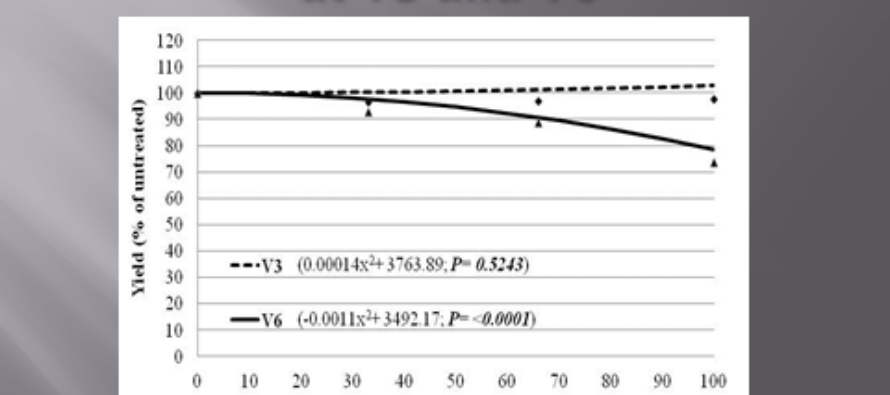Bollworms Plentiful in Young Soybeans

The soybean crop ranges from still in the bag to around V5 stage on average across Mississippi. Over the last 10 days I have received numerous calls (mostly from Delta region) about bollworms attacking vegetative stage soybeans. Arkansas has also reported high numbers of bollworms in soybeans. In fact, AR has some fields where bollworms are infesting emerging soybeans in the crook stage and eating them to the ground where vegetation was present during planting.
The last time that we saw this many bollworms this early was 2010, and it resulted in record numbers of applications to protect soybeans. It is still too early to predict what is going to happen, but signs point to a very heavy bollworm year. Typically in Mississippi our bollworm threat in soybean peaks around June 21 – July 1oth on average. Bollworms are also plentiful in refuge corn and wild host along ditch banks.
Should we treat bollworms in vegetative soybeans? Bollworms are fruit feeders by nature but in small soybeans where flowers and pods are not present they act only as defoliators and should be treated like any other defoliating caterpillar in soybeans. In Mississippi we recommend treatment in soybeans when defoliation averages 35%. Although it is easy to find larvae in fields right now, actual defoliation as whole is light considering how many plants per acre are present. Although Mississippi recommends treating vegetative stage soybeans at 35% defoliation, recent data from one of our former graduate students (Dr. Lucas Owen), indicated that 100% defoliation at V3 in MG4 and MG5 soybeans resulted in zero yield loss. Even at the V6 stage it takes substantial defoliation to result in yield loss. However in MG4 soybeans we begin to see about 10% yield loss around the 70% defoliation level. The point is, we can take much more defoliation than previously thought on small soybeans so you can have confidence that our defoliation threshold of 35% will not get you in trouble. The slides below show percent yield loss compared to the non defoliated plots in MG 4 and MG 5 soybeans at the V3 and V6 vegetative stages. These trials were conducted in the Hills and Delta region over a two year period.
CLICK TO ENLARGE
Treatment: Should you happen to find yourself in a treatment situation on very small beans, remember we have had some trouble controlling bollworms in the past with pyrethroids. You may get better control on small beans due to coverage than we have seen in the past but stick to the higher end of the rate range. Other options include Belt @ 2 oz./acre, Prevathon @ 14 oz./acre, or Intrepid Edge at 4 oz./acre.







Let me tell You a sad story ! There are no comments yet, but You can be first one to comment this article.
Write a comment